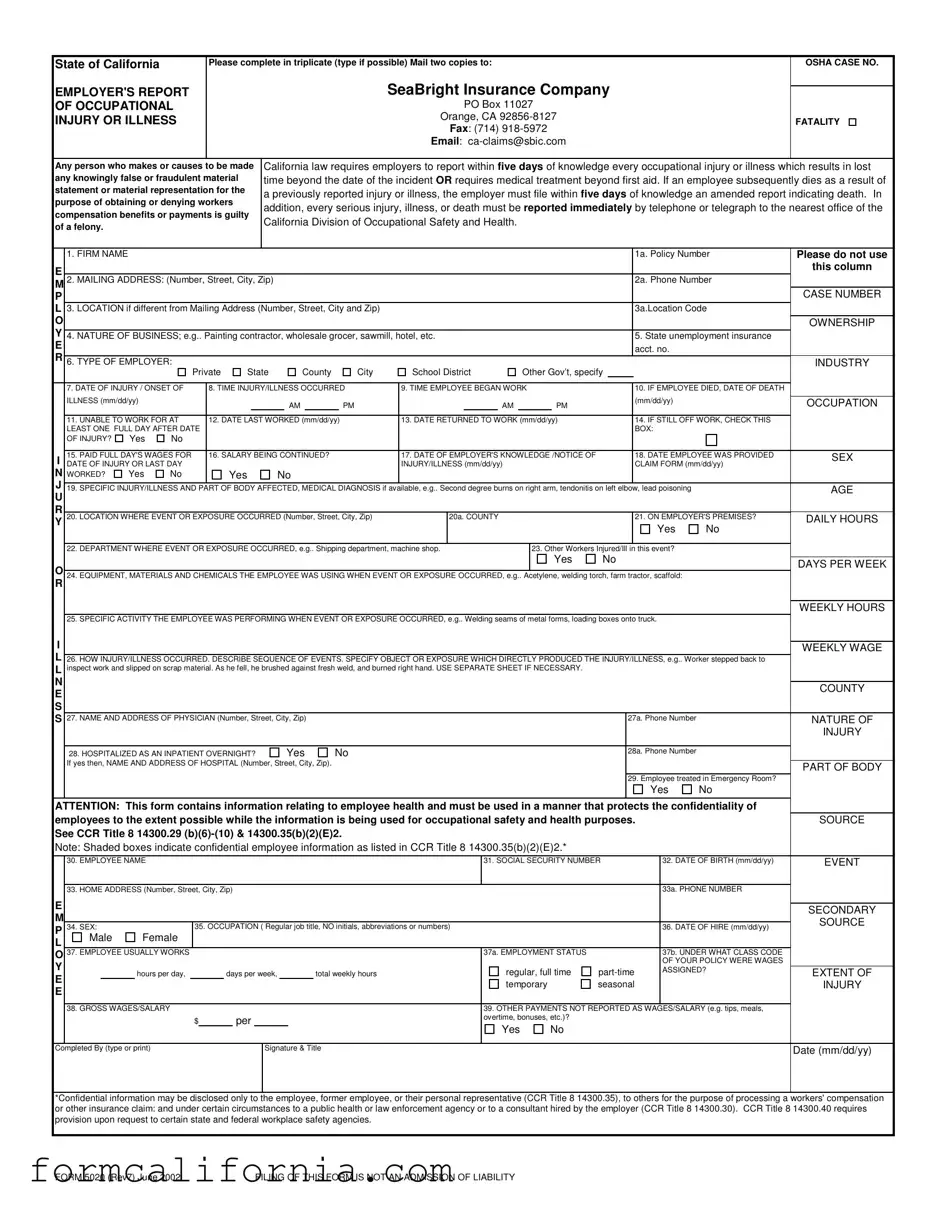The Form 5020 shares similarities with the OSHA Form 300, "Log of Work-Related Injuries and Illnesses." Just as the Form 5020 compels California employers to report workplace injuries or illnesses that lead to significant lost time or medical intervention beyond first aid, the OSHA Form 300 serves a broader, nationwide requirement. It mandates that employers keep a running log of all work-related injuries and illnesses, detailing the nature and severity of each case. Both forms are crucial in maintaining workplace safety standards and ensuring compliance with regulatory requirements, fostering a safer working environment by documenting and analyzing patterns of workplace injuries and illnesses.
Similarly, the DWC Form-1, "Workers' Compensation Claim Form," parallels the Form 5020's function. Once an injury or illness is reported via Form 5020, an affected employee might then need to complete the DWC Form-1 to officially file a workers' compensation claim. This form initiates the claim process, enabling the employee to receive necessary medical benefits and compensations. Both documents are critical in the workers' compensation system, with Form 5020 serving as a preliminary step that potentially leads to the actual claims process kicked off by the DWC Form-1.
Another related document is the "Employer’s First Report of Injury or Illness Form," used in various states outside California. This form, akin to the Form 5020, requires employers to report any workplace injuries or illnesses to their state’s workers' compensation board or equivalent agency. The purpose is to record the occurrence of an injury or illness that could affect an employee's ability to work, mirroring the Form 5020's role in worker protection and the administrative oversight of workplace safety by chronicling incidents that lead to significant lost time or require more than first-aid measures.
The "Serious Injury and Illness Report Form" specific to industries with higher risks, like construction or manufacturing, also resembles the Form 5020 in its intent. It mandates the reporting of severe injuries or illnesses directly to the safety oversight authorities, similar to Form 5020's requirement for notification to the California Division of Occupational Safety and Health (DOSH) in cases of serious incidents. Both forms are integral to immediate response mechanisms and assist in the quick investigation and mitigation of workplace hazards, aiming to prevent similar occurrences.
The Occupational Safety and Health Administration (OSHA) Form 301, "Injury and Illness Incident Report," is another document related to Form 5020. It provides detailed information about each individual case recorded in the OSHA Form 300 log. Like the 5020, Form 301 is designed to collect comprehensive details about work-related injuries and illnesses—from the specifics of the incident to the outcome for the employee involved. Together, these forms compile a complete overview of workplace safety incidents, helping employers and regulators identify and address potential hazards.
Lastly, the "Notice of Occupational Disease and Claim for Compensation" form, used for occupational diseases, shares a core purpose with Form 5020. While Form 5020 covers both injury and illness, this particular document is geared towards illnesses directly resulting from work environment or duties. It necessitates the detailed reporting of occupational diseases for workers' compensation claims, analogous to the need for detailed injury or illness reporting on Form 5020. Both documents are essential for ensuring employees receive the appropriate medical care and compensation for work-related issues.

